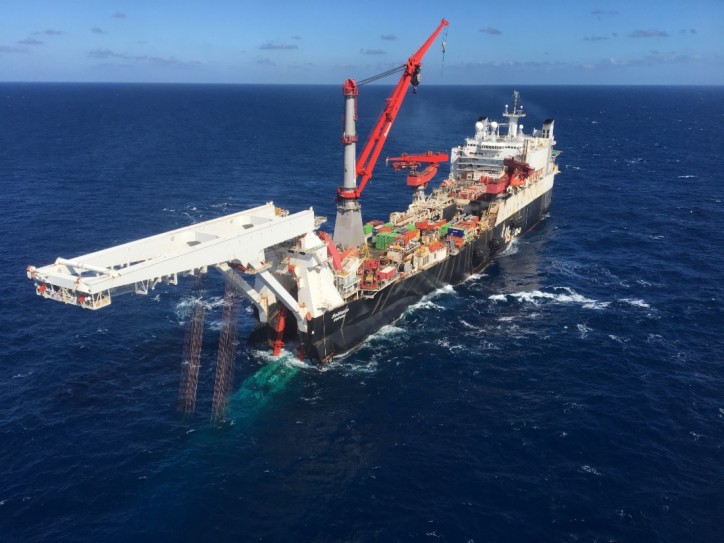The offshore pipelay vessel Solitaire started Wednesday (Sept 05) at 13:25 CET the pipelay for the Nord Stream 2 natural gas pipeline in the Gulf of Finland.

Before the start of pipelay, the vessel was equipped and tested to meet the project's strict requirements. Nord Stream 2's construction plan takes into consideration different construction conditions, in particular, environmental requirements. Solitaire, for example, uses a dynamical positioning system with thrusters to position itself accurately. It is thus only the pipeline that touches the seabed. Using a vessel operating without anchors ensures additional safety in the congested Gulf of Finland.
Solitaire is a 300-meter-long and 41-meter-wide vessel that will lay pipes around the clock seven days a week. The vessel has accommodation on board for 420 persons. Pipe supply vessels (PSVs) will deliver the 12-meter, 24-ton pipes used to build Nord Stream 2 to the pipelay vessel from the project's nearest logistics hubs, such as Kotka or Hanko, to maintain the necessary pipe stock.
The pipes are welded together on board the vessel, then welds are tested and finally the pipeline is lowered down to the seabed. A survey vessel will perform surveys prior to and after pipelay to verify that the pipeline is located at its correct position.
The safety zone around the pipelay vessel is 1.85 kilometers (1 nautical mile) and around the survey vessels Oceanic and Olympic Triton 500 meters (0.3 nautical miles). Information to seafarers on potential navigation restrictions can be found in real-time in the Notices to Mariners, NAVTEX (Navigational Telex) and VHF-radio. All safety operations within the Finnish EEZ have been agreed in cooperation with the Finnish Transport Agency and Border Guard. Pipelay works are carried out in compliance with the national permit provisions and overseen by the national authorities.
Background
Nord Stream 2 is an international project for the construction of a gas pipeline across the Baltic Sea. The pipeline will provide reliable supplies of Russian natural gas to European consumers via the best possible route. Nord Stream 2 will largely follow the route and technical concept of the successful Nord Stream pipeline. The new gas pipeline will have the capacity of 55 billion cubic meters of gas per year, which will be sufficient to provide 26 million households with heat and electricity every year. Natural gas supplies will help lower CO2 emissions across the European Union, as well as create a more balanced energy mix with gas substituting for coal in power generation and providing back-up for intermittent renewables such as wind and solar power.
Source: Gazprom